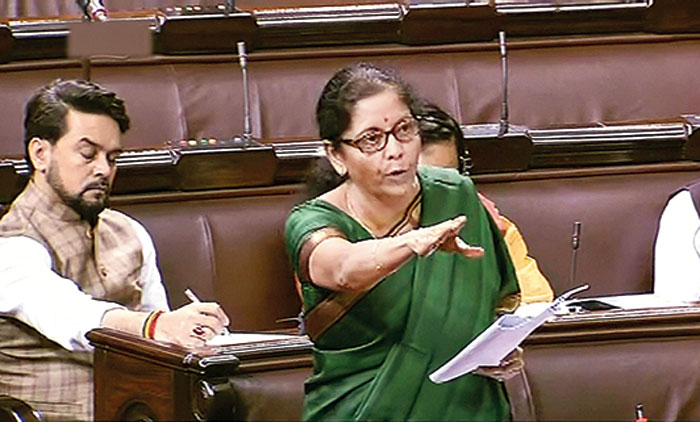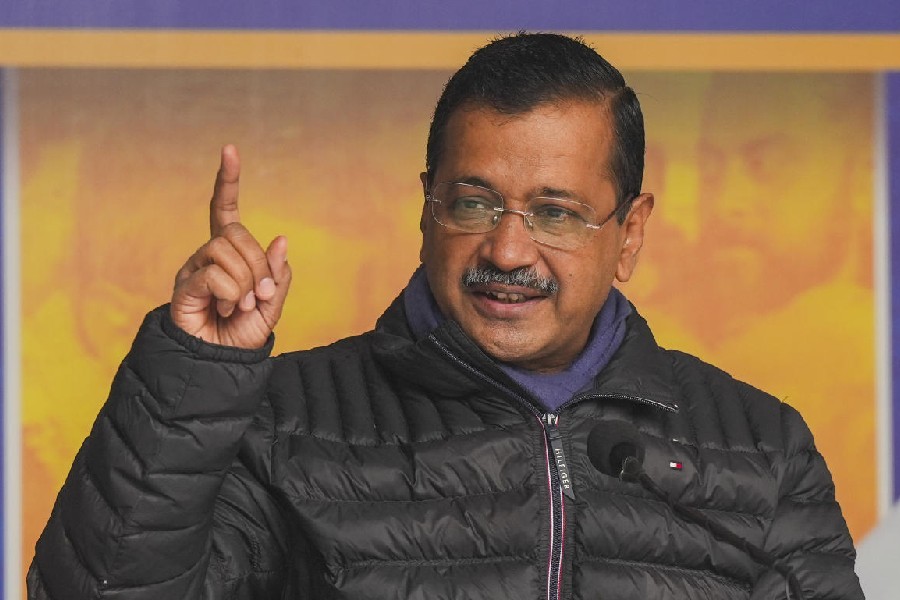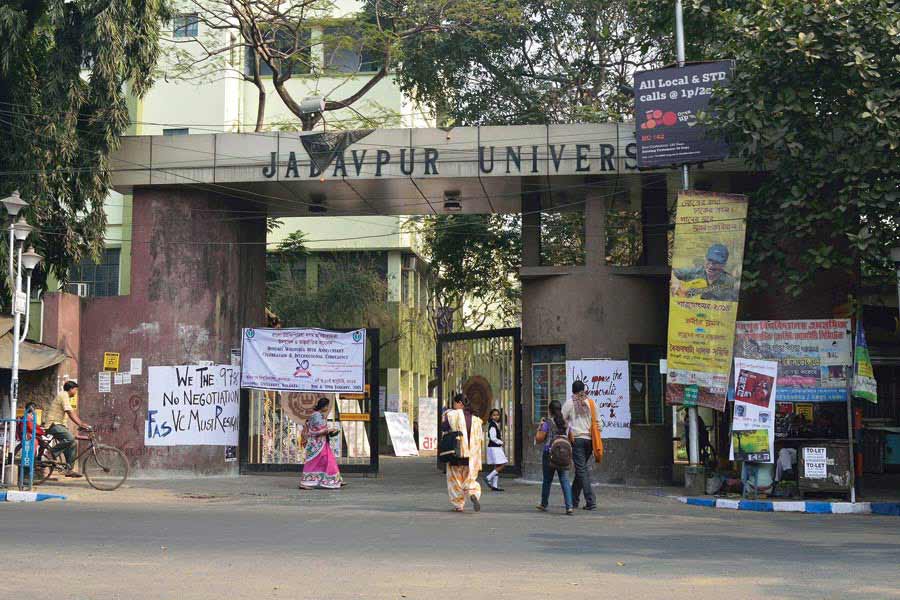The Narendra Modi government and the Opposition sparred on Wednesday over the scale of the economic slowdown and its impact on businesses, employment opportunities and people’s lives and their spending habits.
Finance minister Nirmala Sitharaman stuck to her guns, conceding that the economy may have slowed down but insisting it was in no danger of sliding into a recession.
“Growth may have come down, but it is not a recession yet; it won’t be a recession ever,” Sitharaman asserted while replying to a short-duration discussion on the state of the economy in the Rajya Sabha.
A recession is defined in classical economics textbook terminology as a contraction of the economy (not the growth rate) over two consecutive quarters.
The Indian economy slowed to 5 per cent in the first quarter ended June 30 and the Central Statistics Office is scheduled to come out with the numbers for the second quarter on Friday.
Many economists and research analysts have prophesied that growth would dip further to 4.7 per cent in the quarter ended September 30, deepening concerns that the Modi government hasn’t been able to work out a way to take the economy out of the rut.
The Opposition legislators wanted the government to acknowledge that the slowdown was the result of structural problems with the country’s financial architecture — an admission that the government has refused to make, insisting that the crisis had emanated from temporary cyclical factors and the complications arising from the trade spat between the US and China.
Sitharaman may have been responding to Congress leader Anand Sharma’s statement where he, possibly inadvertently, introduced the R-word.
“The situation, which we are witnessing today, cannot be called a slowdown or merely a recession. It can no more be explained away as cyclical, structural or linked to the global developments,” Sharma said while kicking off the debate.
Sharma’s colleague Jairam Ramesh, who had to be persuaded by deputy chairman Harivansh Narayan Singh to join the debate after the Congress had exhausted its allotted time, was more measured in his criticism.
“I am glad that India has reached a stage where (growth) coming (down) from 7 per cent to 5 per cent is defined as a slowdown. In many countries of the world, 5 per cent growth would be (seen as) a miracle… but, in India, it is the changing aspirations of India that an economy that is growing at 5 per cent is unacceptable,” Ramesh said.
Ramesh went on to add: “Economics textbooks will not define a fall from 7 per cent to 5 per cent as a recession,” which many saw as an attempt to correct Sharma’s unfortunate characterisation of the economic crisis.
The Congress legislator also said that the Modi government was over-obsessing about foreign fund inflows. “No economy has ever grown on FDI (foreign direct investment). So, I would suggest let’s forget about the F and focus on DI (domestic investment). This obsession with FDI needs to end.”
Ramesh succinctly articulated the view that many in the Opposition tried to put across the government. “I would make an earnest plea to the honourable finance minister to first acknowledge that there is a problem. You cannot address the problem unless you acknowledge that there is a problem,” he said.
While she did not agree with many of the points Ramesh made, Sitharaman readily acknowledged Ramesh’s nuanced statement. “I must say a big thanks to Jairam Ramesh…. He probably summed up many points which were not probably in the same strain as was spoken by that side of the House…. If you look at the economy with a discerning view, you see that the growth may have come down but it is not a recession yet,” she said.
Several legislators trotted out a host of data points to buttress their argument that the Indian economy had gone completely off the rails.
Anand Sharma spoke of the alarming drop in the country’s investment rate to below 30 per cent from 36.4 per cent in 2012 and the contraction in factory output in September to minus 4.3 per cent — the lowest in almost eight years.
LIC ‘plunder’
Digvijaya Singh of the Congress expressed deep concern over what he described as the government’s attempt to plunder the wealth of the Life Insurance Corporation to prop up the debt-laden IDBI Bank by acquiring a 51 per cent stake.
Besides, Rs 15,000 crore was forked out to the railways with a five-year moratorium on payments. He contended that LIC policyholders had been badly short-changed as a result with a sharp fall in their bonus payouts.
“The Prime Minister has developed the expertise of fixing the people; he doesn’t have the expertise to fix the economy. Let him take the advice of Dr Manmohan Singh,” the Congress leader added.
Several legislators blamed the economic crisis on the reckless demonetisation experiment that sucked cash out of the economy and busted small businesses, while others said the poorly planned goods and services tax regime had wrecked businesses, crimped revenue collections and damaged the revenues of state governments while chasing the crooked rainbow of cooperative federalism.
In her reply, Sitharaman tried to score brownie points by making a favourable comparison of the macroeconomic data during the Modi regime with those achieved by the UPA.
Sitharaman blamed the fall in GDP growth in the last two financial years to the lagged effect of twin balance-sheet crises stemming from the stress in the banking sector because of mounting non-performing assets (NPAs) or bad loans, on the one hand, and heavily indebted corporates, on the other, both resulting from indiscriminate lending during the UPA regime.
Many Opposition parties such as the Congress, the Trinamul Congress and the Left walked out of the House during the finance minister’s reply, saying she was reading out her budget speech rather than addressing issues facing the economy.
“Quite a lot of concern has been raised about the fiscal deficit. In July budget, I pegged it at 3.3 per cent (of GDP). Although the FRBM Act has been there since 2004, on average, the fiscal deficit during UPA-2 was 5.5 per cent of GDP,” Sitharaman said, adding that she had no plans to revise her fiscal deficit target for 2019-20.











